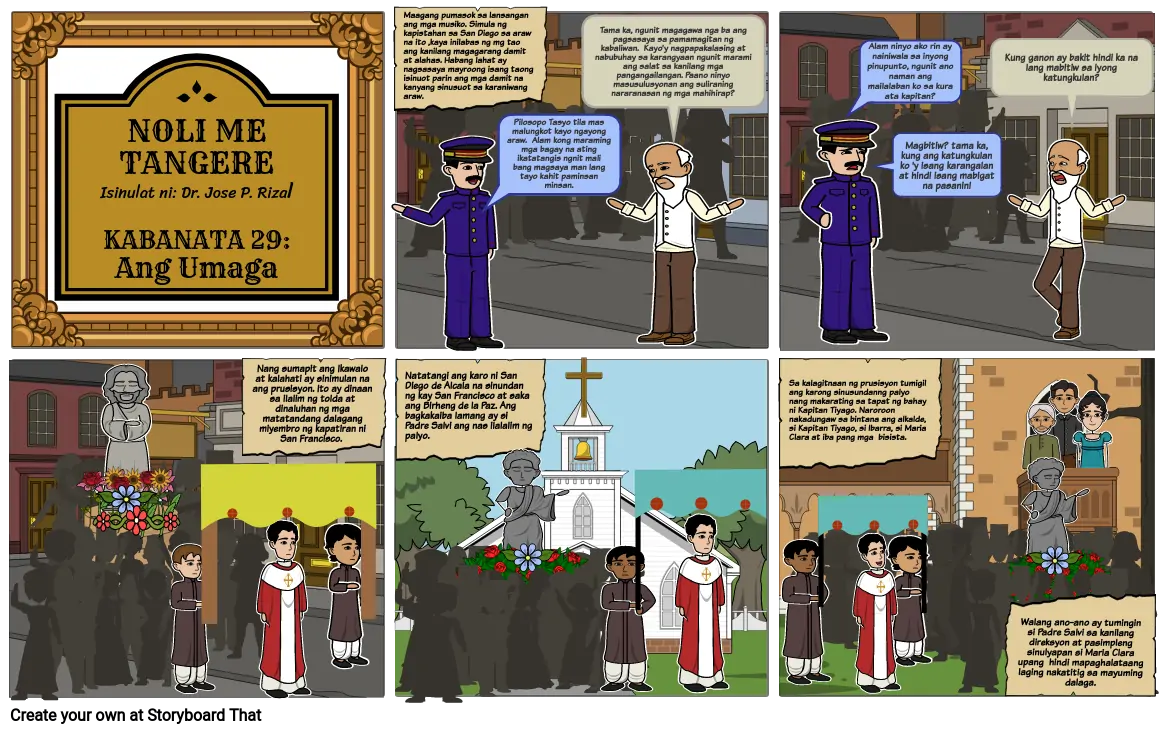Kabanata 29 Noli Me Tangere

In Kabanata 29 of Noli Me Tangere, Pilosopo Tasyo guides Crisostomo Ibarra in understanding social issues. This chapter sheds light on the intricacies of Philippine society during that era.
The characters and events provide valuable insights into the challenges faced by the country. As the narrative unfolds, readers are drawn into a world filled with political intrigue and personal struggles. Jose Rizal’s masterful storytelling captures the essence of the time, making this chapter a crucial component of the overall narrative.
By delving into the nuances of societal structures and individual experiences, Kabanata 29 offers a glimpse into the complexities of the era. From the interactions between characters to the underlying themes, this chapter weaves together a rich tapestry of historical significance and human emotion.

Credit: www.slideshare.net
Contents
Kabanata 29: Ang Huling Gunita
Kabanata 29: Ang Huling Gunita tackles an important chapter in Jose Rizal’s Noli Me Tangere, delving into the final memories of the characters. This section provides a thought-provoking exploration of their experiences and sets the stage for the novel’s conclusion.
Kabanata 29: Ang Huling Gunita is a pivotal chapter in the novel Noli Me Tangere by Jose Rizal. In this chapter, the readers are taken through a poignant and reflective moment as the story nears its climax.
Paglalarawan ng Tagpuan
The tagpuan or setting of Kabanata 29: Ang Huling Gunita is the cemetery where many of the deceased characters in the novel rest in eternal peace. The cemetery is described as a solemn and somber place, with tombstones and mausoleums dotting the landscape. The atmosphere is heavy and melancholic, symbolizing the finality of life and the underlying themes of death and redemption.
Mga Pangunahing Tauhan
1. Simoun – The enigmatic character, Simoun, plays a central role in this chapter. He is seen wandering among the graves, deep in thought and introspection. Simoun’s character represents a catalyst for change and revolution in the novel.
2. Basilio – The young and idealistic Basilio also features prominently in this chapter. He encounters Simoun in the cemetery, and their conversation sets the stage for the culmination of their intertwined fates. Basilio symbolizes the voice of the marginalized and oppressed.
3. Padre Florentino – Another significant character is Padre Florentino. He is an old and wise priest who serves as a guiding figure in the lives of Basilio and Simoun. Padre Florentino’s wisdom and compassion bring a sense of hope and redemption to the story’s narrative.
In Kabanata 29:
Ang Huling Gunita, Rizal masterfully weaves together the elements of setting and character. The cemetery setting highlights the overarching themes of mortality and the consequences of societal injustice. Simoun, Basilio, and Padre Florentino, as the primary characters in this chapter, exemplify the various societal roles and perspectives. Together, they bring depth and emotion to the story, captivating the readers with their struggles, aspirations, and hopes for a better future.
Paglalarawan Ng Tagpuan
When discussing Kabanata 29 of Noli Me Tangere, the focus is on the ‘Paglalarawan ng Tagpuan.’ The rich descriptions of the setting in this chapter offer a vivid backdrop to the unfolding events, immersing readers in the world of the characters.
Sa Kabila Ng Ilog Pasig
The chapter begins with a picturesque scene set across the Pasig River, with the lush greenery and tranquil waters capturing the attention of the reader. Jose Rizal‘s detailed depiction allows us to envision the beauty of the surroundings, evoking a sense of calm and peace amid the looming conflicts.
Bahay Ni Kapitan Tiyago
Within the confines of Kapitan Tiyago’s home, readers are introduced to a world of opulence and elegance. The lavish furnishings and immaculate gardens convey the wealth and status of the household, serving as a stark contrast to the poverty and struggles faced by many in the story.
Mga Pangunahing Tauhan
“Mga Pangunahing Tauhan” sa kabanatang 29 ng Noli Me Tangere ay naglalarawan ng ilang mga karakter na may malaking kontribusyon sa kwento.
Simoun
Si Simoun ang pagkatawid sa kanyang pagkatao bilang Crisostomo Ibarra, may planong paghihiganti laban sa mga naghari sa bayan.
Padre Florentino
Si Padre Florentino ay isang pari na may malasakit sa bayan, nagbibigay ng gabay kay Simoun, at nagtanggol sa kanyang mga prinsipyo.
Isagani
Si Isagani ay isang kabataang may pangarap, nagpakita ng pagmamahal sa bayan, at nagtamo ng pagkawala sa pag-ibig.
Mga Pangyayari
Pagdating Ni Simoun
Si Simoun ay dumating nang tahimik sa kabanata. Bruwal na lumitaw sa hapag.
Pag-uusap Ng Mga Tauhan
- May usapang naganap sa mga tauhan. Sila ay nagtulungan sa kanilang hangarin.
- Biglang umalis si Simoun. Iniwan ang mga tauhan sa kanilang kakaibang kasalukuyan.
Kahulugan Ng Kabanatang Ito
The significance of Kabanata 29 Noli Me Tangere lies in the revelations and turning points it presents in the story. This chapter marks the beginning of the final act of the novel, where major events unfold and character developments are brought to light.
Pagsisimula Ng Huling Yugto
Ang Kabanata 29 ng Noli Me Tangere ang pagsisimula ng huling yugto ng nobela. Dito unti-unti nang nabubunyag ang mga pangyayari na magdadala sa mga pangunahing tauhan patungo sa kanilang kahantungan. Sa kabanatang ito, mararanasan ng mga mambabasa ang hindi matatawarang tensyon at pagbabago sa takbo ng kuwento.
Pagbabago Sa Pamamahayag Ni Simoun
Malakas na naramdaman ang pagbabago sa pamamahayag ni Simoun sa Kabanata 29. Dito, maipapakita kung paano nababalot ng galit at pagkasuklam ang kanyang mga hakbang, anupat nagbibigay ito ng bagong perspektibo sa kanyang karakter.

Credit: www.storyboardthat.com

Credit: www.youtube.com
Conclusion
In Kabanata 29 of Noli Me Tangere, the story reaches a climax as the characters face critical turning points. The scene is set for the resolution of the conflicts and mysteries that have been building up. As the plot unfolds, it becomes clear that the characters’ choices will have far-reaching consequences.
Readers are left eagerly anticipating the resolution in the following chapters.



